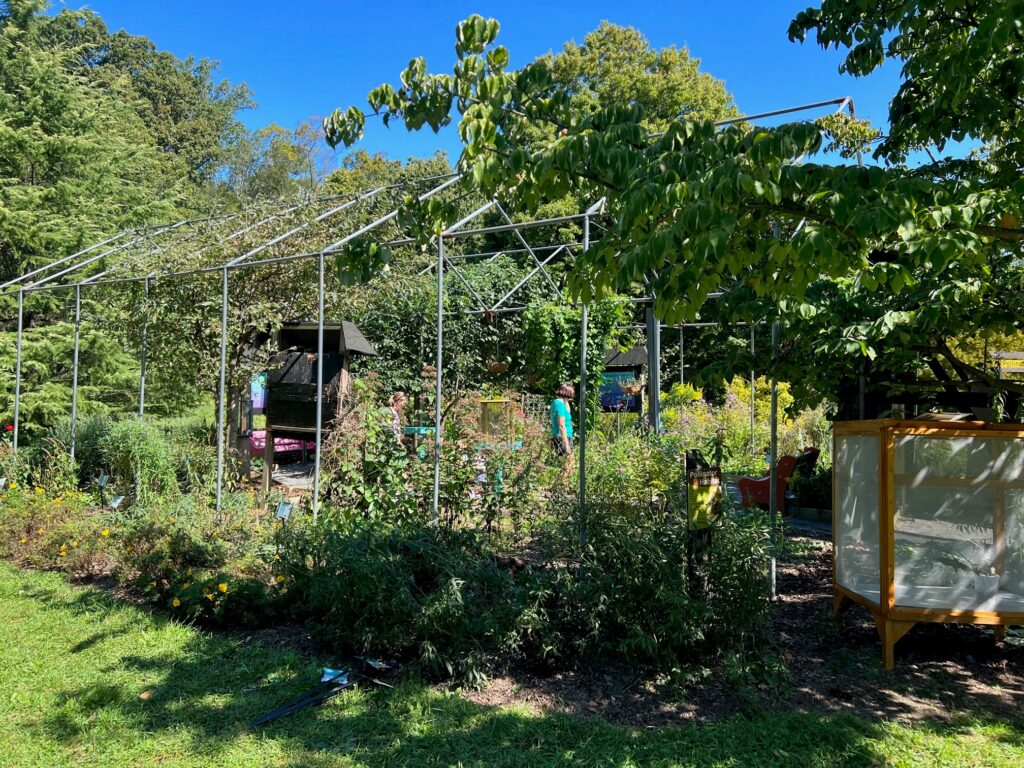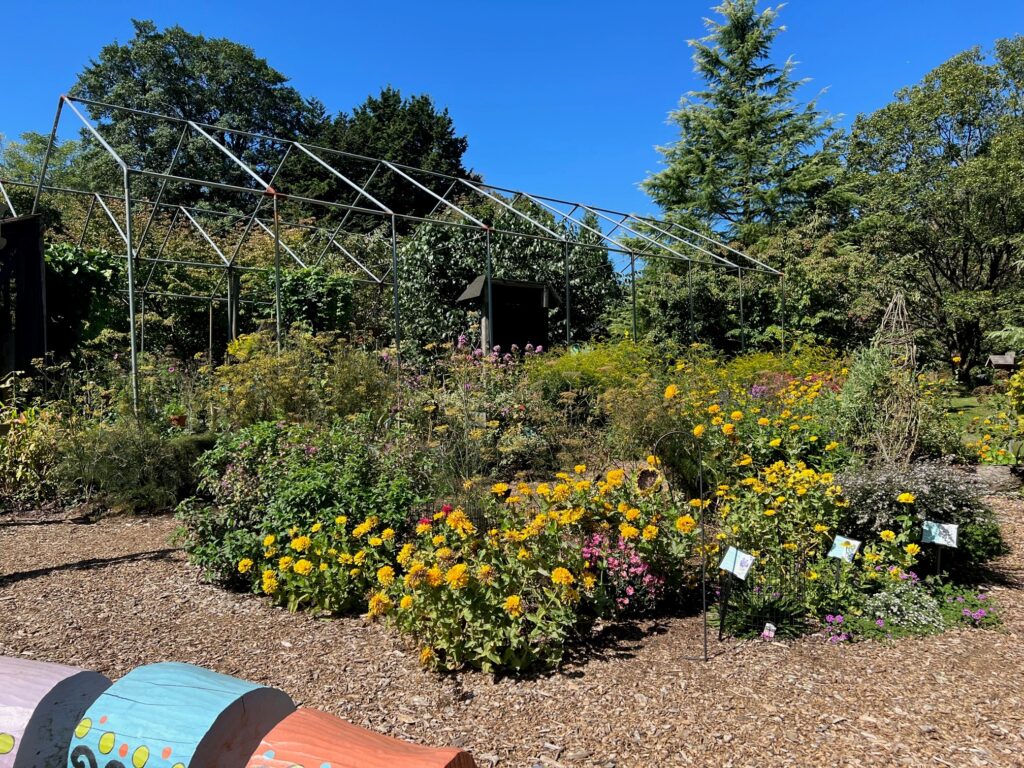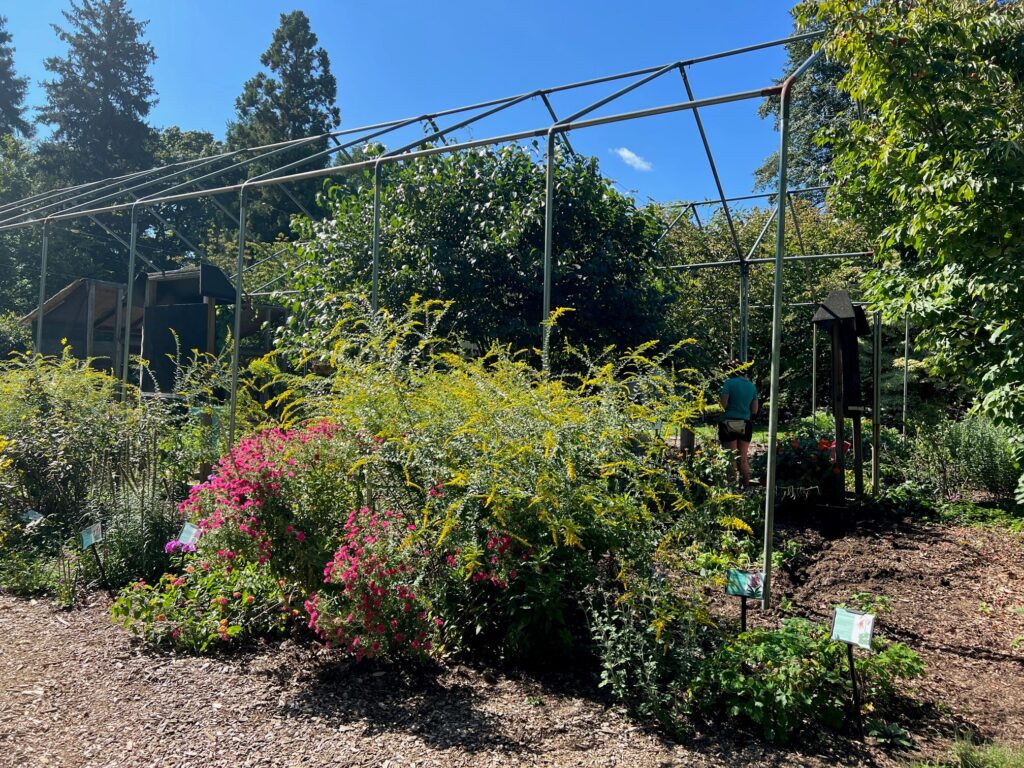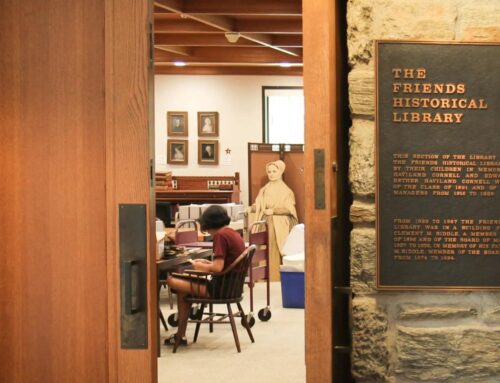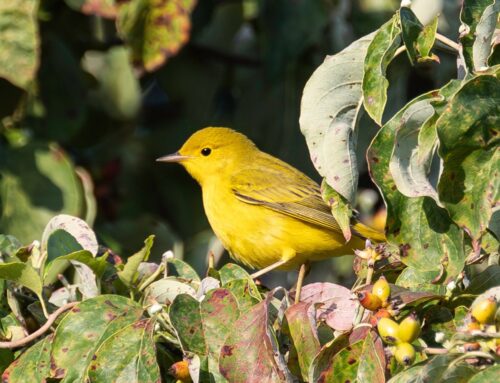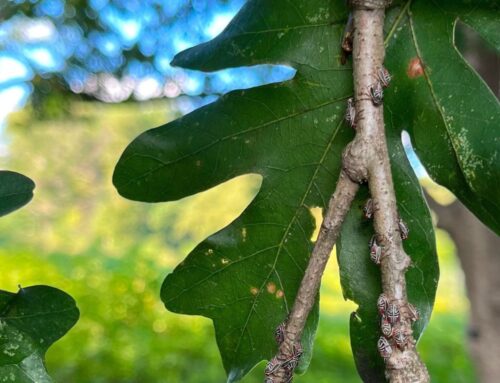Two years ago, the focus of the Pollinator Preserve shifted to providing for all pollinators, not just butterflies. The success of our gardens outside of the Butterfly House has exceeded expectations and delighted our visitors as they easily viewed the many fascinating insects attracted to this space. It is not just caterpillars and butterflies now; seeing the interactions between the plants and so many insects throughout the gardens pulls us in to watch more closely and make discoveries every day.
Like all true science, these discoveries encourage us to question our methods. They inspire us to examine what we are doing right – and what we could do better.
Pollinator decline is well documented, as is their contribution to our food supply and their role in the food chain. We are at a pivotal point in the purpose and design of the Butterfly House itself as science advances regarding best practices. Is an enclosed, shaded garden populated primarily by butterflies and caterpillars a good idea? The answer, for a variety of reasons, is “no.”
The artificial environment within the enclosed Butterfly House could never be healthy and balanced. Too little sun, an artificially high population of butterflies, and no predators create an unsustainable situation.
Of course, none of us wishes to cause harm to any of our native insects, but when we took a step back and really looked at what we were doing, we were causing harm. This was quite evident during the two previous summers when we viewed the habitat inside the Butterfly House in contrast to the environment outside in the Pollinator Preserve. The evidence was everywhere in the enclosed space. We saw it in our plants, which were in poor health and suffering from plant pests. We also saw it in our butterflies, who experienced nectar shortages and increased sibling mating. Once we understood this, it became our responsibility to do better.
The issues caused by the netting are numerous, and examples are detailed in a recent blog, “Turning a House into a Home.” Now we want to share our plans with you as we focus on creating a more natural and safe home for these insects.
The New Plan
The netting will not go back up over the Butterfly House, although the supporting structure and front entrance will remain. Sunlight and airflow will significantly improve in this space. Insects will be free to utilize the carefully chosen plants as they wish, just as they have been doing outside the confines of the Butterfly House.
Specific Education Stations within the garden will focus on a number of topics as the months progress. Examples include particular butterflies, birds, other insects, and even some of the plants that are powerhouses in the garden. Signage, displays, and resources will support meaningful engagement. A few rearing cages will be included to allow close-up viewing of the various life stages of selected insects, mainly focused on caterpillars.
An improved garden layout and unobstructed viewing will enhance the visitor experience as we offer one larger garden space. You will know when the hummingbirds visit or when a group of butterflies is attracted to a plant, as no netting obscures the action.
We aim to continue with an ecologically sound open pollinator garden for all insects as we enter 2023 and beyond. Yes, there will be additional challenges, but the plants and insects will be healthier and able to live without barriers. Helping to connect visitors to the natural world can often be a balancing act, supporting the needs of local wildlife and preserving the integrity of the natural system on one side and providing a positive visitor experience on the other. We’re excited to continue to create space in the Pollinator Preserve that can accomplish both. A diverse array of insects, birds, and other creatures will benefit from this much-needed habitat, and we know our visitors will, too, as they experience the beauty and activity of a healthy and well-balanced ecosystem.
This past summer, a woman walked through the outer garden beds and exclaimed to her family, “This is what I want at home. Beautiful flowers with butterflies and bees visiting and being able to watch nature up close.” We share that goal at Tyler and strive to create a balanced healthy home that leads all of us to amazing discoveries.
To read more about pollinator decline: https://xerces.org/pollinator-conservation/whats-at-stake
To learn what you can do to help: https://xerces.org/bring-back-the-pollinators


